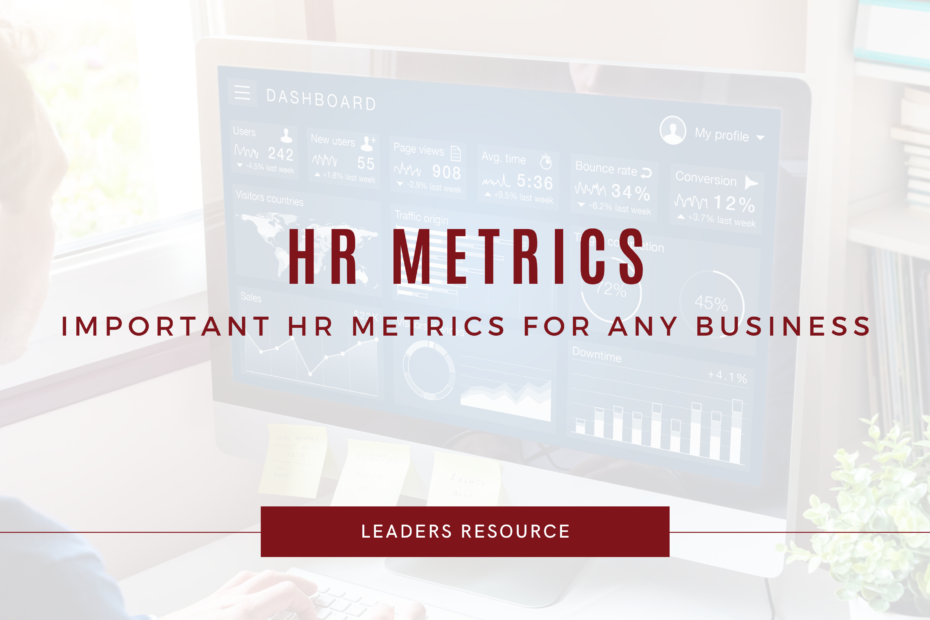Keeping track of HR metrics is a crucial step while starting and growing your company. Having HR metrics on hand can reveal the health of your organization, show potential areas for cost savings, and lay a foundation for supporting your employees in the future.
In this article, we’re breaking down a few important HR metrics for any business at any stage. Tracking these will provide valuable insights and improve your people practices along the way. Let’s get started!
Cost per hire
First, we’ll talk about Cost Per Hire. This is an important metric to understand when looking at the cost-benefit of hiring new employees and scaling your business. Not to mention, it gives you a realistic look at how much you invest in finding the right people for your company. Compare the cost per hire to your retention rates. If your retention is higher than the industry average, your investment may be paying off.
You can calculate your cost per hire by dividing recruitment costs by the number of hires made.
Turnover
The next metric is Turnover! Turnover can be calculated and viewed a few ways depending on the timeframe and the types of turnover you include. Turnover answers the question, “how many employees stay within my team, department, or organization, over a given period of time?” For example, employees leave for reasons like retirement relocation, parental leave, bereavement leave, and more.
To calculate turnover, divide the current number of employees by the number of employees at the start of the time period.
HR Tip
If you’re looking to drill down on turnover to understand why it’s happening, we recommend including the reason for turnover for every employee who leaves. Doing so will allow you to identify trends in why employees are leaving and troubleshoot.
Diversity
Measuring diversity in your organization opens opportunities to boost inclusion and belonging, reach an equitable compensation system, and much more.
True diversity means having people from all kinds of backgrounds and identities at every level of your organization. Making a conscious effort to diversify teams and management starts with understanding where you are at. Plus, hiring a diverse workplace is only successful if you prioritize the success of all employees. However, the payoff is high resulting in an increase in innovation, revenue, and retention.
HR Tip
To track diversity, you first need to understand which groups are represented at your company. Then, you can compare your diversity numbers to compensation and status. This helps you to understand if all people are equally represented across the organization, or if you are falling short in some areas.
Training ROI
You can prove training ROI through a variety of metrics. Look at training on a case-by-case basis and set benchmarks and goals. If you want to increase productivity, make sure you are already tracking productivity in your project management software. However, if you are developing soft skills like communication, look long-term to prove the return. Moreover, promotions, raises, and improved performance reviews are all markers that your investment is paying off. Make sure you know what you’re looking for before trying to prove it.
HR Tip
Training is a two-way street. You’ll only reap the benefits if employees are able to use their new skills. For example, if a customer support team member takes a course on web development to improve their tech skills, making sure they have the opportunity to put their training to practice afterward is what will help prove the ROI of the training. Without the resources or opportunities to excel, the ROI cannot be proven.
Employee NPS
How likely are your employees going to refer you as an employer?
Answering this question outlines how happy and committed your employees are. A high Net Promoter Score (NPS) is linked to lower attrition and higher feelings of belonging and inclusion. As a result, you see a strong foundation for productivity and healthy people operations.
HR Tip
Calculate your net promoter score by sending out an anonymous survey to all your employees asking: “How likely are you to recommend us as an employer?”. Use a sliding scale of one to five to represent the options. Then, take the average and do this periodically to see the fluctuations over time.
Bonus: Vacation Day usage per employee
A great way to check in on employee well-being is by looking at vacation day usage. While working from home, vacation days can seem a little useless. Normally, vacation days are used to go on a holiday or trip. However, since many of the regular benefits aren’t readily available to us during the pandemic, some of us aren’t sure how to use our vacation days anymore.
HR Tip
The purpose of vacation days is to rest and recharge. Try to encourage your employees to use their vacation days, especially if they’re feeling burnt out. Also, it improves mental health, productivity, and mood!
In conclusion, using your people data to track HR metrics is important at any stage in the business. Finding the metrics that make sense to you allows you to benchmark for the future. Give these a try!
Are you looking to implement HR practices into your growing business? Email us today at [email protected] for guidance!
